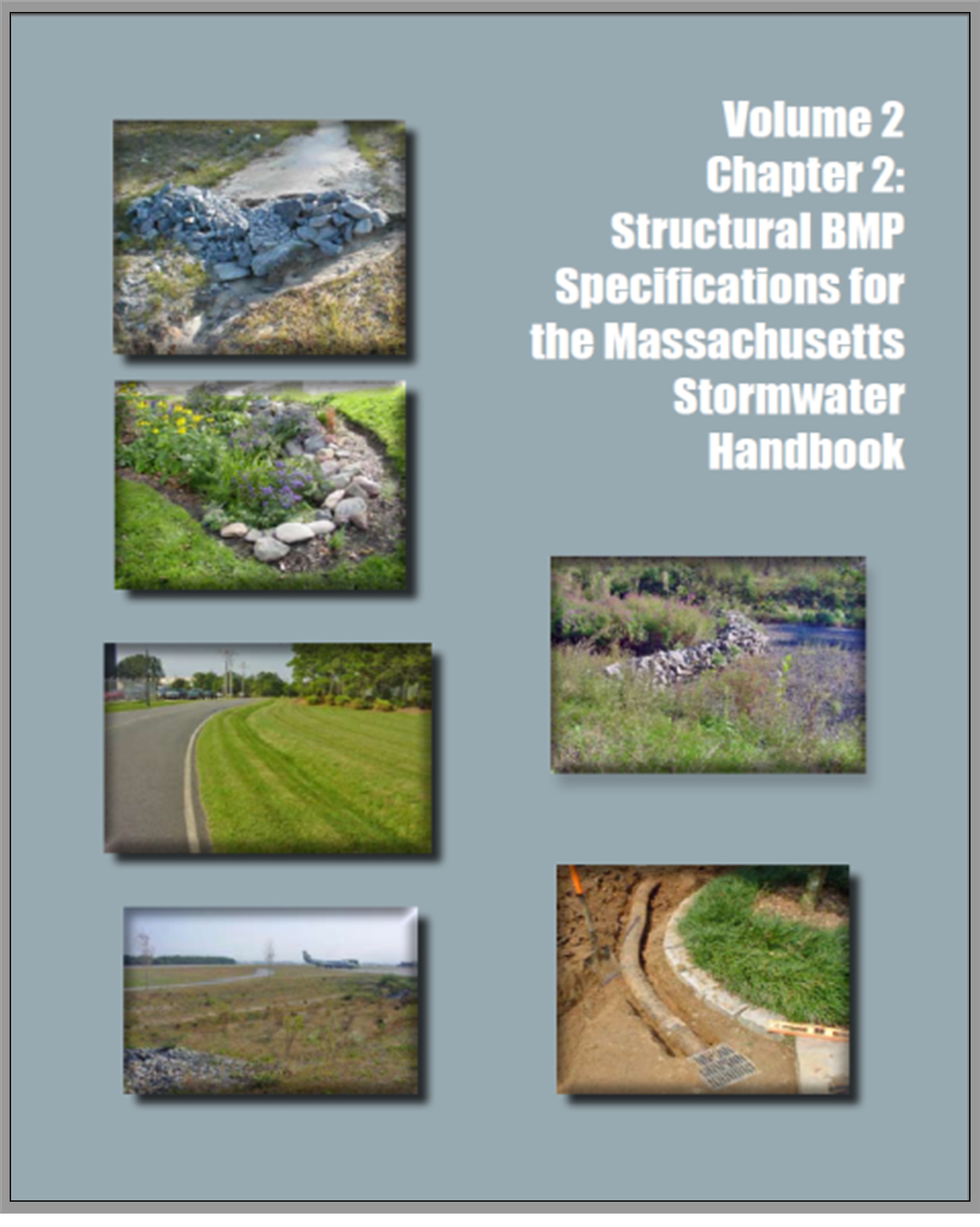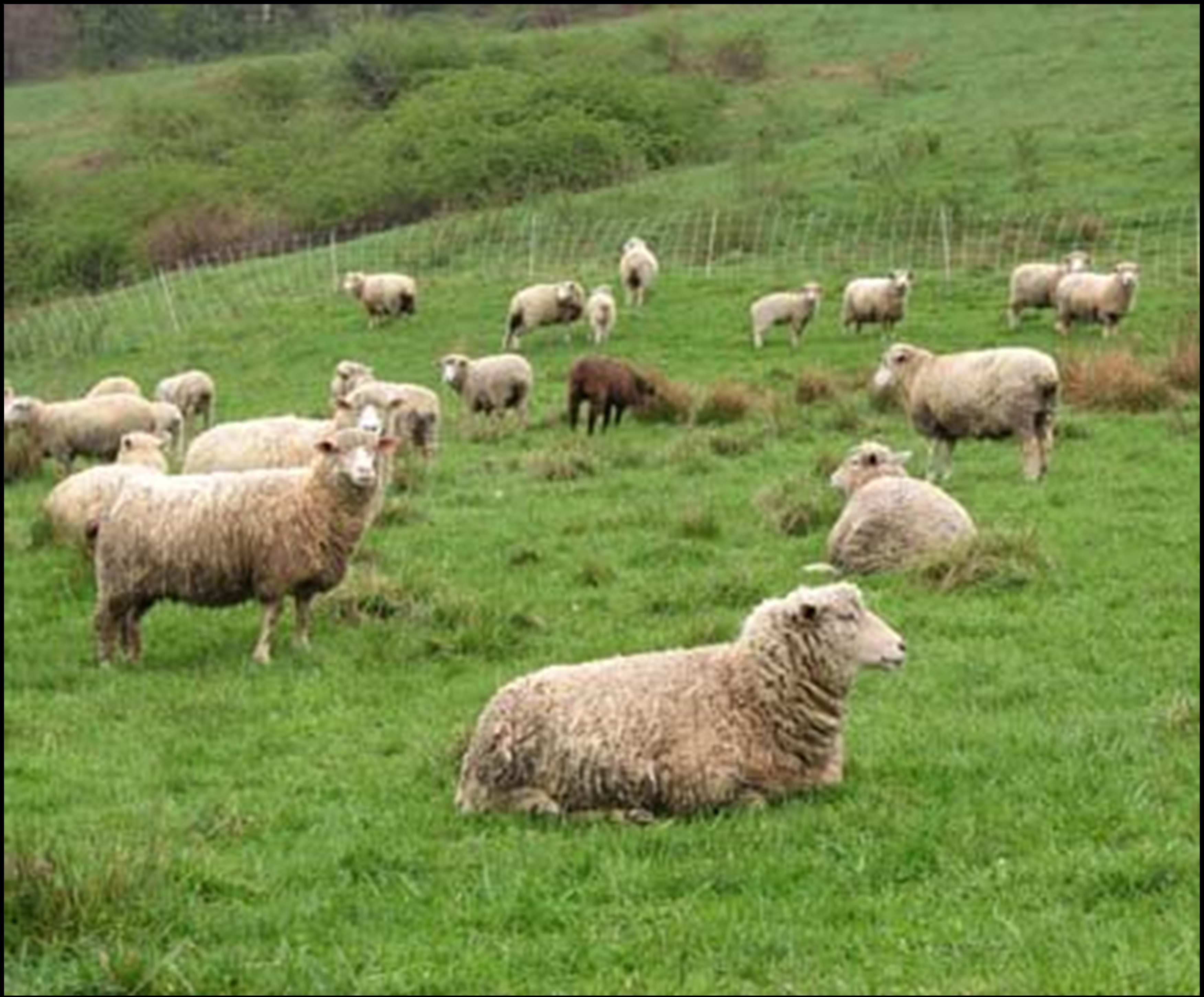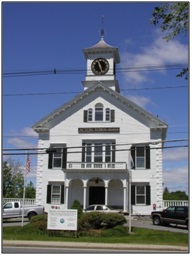Laws and Regulations To Address NPS Pollution
This section covers the following:
- Legal Authority to Control NPS Pollution in Massachusetts
- Primary Laws and Regulations Addressing NPS Pollution in Massachusetts
- Municipal Regulations
- Urbanized Areas and Regulated Municipal Separate Storm Sewer Systems (MS4s)
Legal Authority to Control NPS Pollution in Massachusetts
 Massachusetts waters are protected from environmental degradation by a coordinated system of Federal and State control.
Massachusetts waters are protected from environmental degradation by a coordinated system of Federal and State control. The Federal Clean Water Act, 33 U.S.C. §§ 1251 et seq. (Federal Act), seeks to prevent water pollution by point sources primarily by requiring facilities that discharge pollutants into surface waters of the United States to obtain Federal permits that limit the amount of pollutants that may be discharged. The Federal Act also preserves a significant State role in the Federal permitting process. Subject to USEPA review, States establish their own water quality standards. Id. at § 1313. In addition, States retain the right to impose pollution control limits that are more stringent than the "floor" set by Federal law. Id. at §§ 1311(b)(1)(C), 1370. Before a Federal permit may issue, the relevant State first must certify that the permittee's activities will not violate the State's water quality standards. Id. at § 1341. This "State certification" process ensures that holders of Federal permits respect and uphold State standards.
The Massachusetts Clean Waters Act, G.L. c. 21, §§ 26-53 (State Act), confers on MassDEP "the duty and responsibility ... to enhance the quality and value of water resources and to establish a program for prevention, control, and abatement of water pollution." G.L. c. 21, § 27. Like the Federal Act, the State Act creates a comprehensive permitting program to ensure water quality standards are met. Id. at §§ 27(6), 43-44. No one may "discharge pollutants ... [or] engage in any other activity that may reasonably be expected to result, directly or indirectly, in discharge of pollutants into waters of the [C]ommonwealth ... without a currently valid permit" issued by [MassDEP]. Id. at § 43(2). Permits may include not only discharge limitations but also any "additional requirements ... necessary to safeguard the quality of the receiving waters." Id. at § 43(7). Violation of the terms of a permit is punishable by civil and criminal penalties. Id. at § 42.
In addition to establishing the permit program, the State Act directs MassDEP to establish water quality standards. See id. at § 27(5). The State Act also confers on MassDEP the authority to adopt "rules and regulations which it deems necessary for the proper administration of the laws relative to water pollution control and to the protection of the quality and value of water resources." G.L. c. 21, § 27(12). Unlike the Federal Act, the State Act seeks to prevent water pollution by nonpoint sources by requiring dischargers of pollutants into surface waters or groundwater of the Commonwealth to obtain State permits that limit the amount of pollutants that may be discharged. The body of regulations through which the Department exercises the broad authority delegated to it under the State Act appears mainly at 314 C.M.R. 1.00-18.00. "The statutory purpose of the Act, expressed through its text, makes it clear that [MassDEP] has the discretion to create regulations that will best preserve and also restore the quality of our waters." Friends & Fishers of the Edgartown Great Pond, Inc. v. Department of Envtl. Protection, supra at 838.

The Massachusetts Stormwater Handbook is a guide to the Stormwater Management Standards, best management practices, and related topics.
The State Act is embedded in a network of environmental laws and regulations. For instance, in 1996, MassDEP issued the Stormwater Management Standards that established the Stormwater Management Standards. Since that time, MassDEP has applied the Stormwater Management Standards pursuant to its authority under the State Act and the Wetlands Protection Act, G.L .c. 131, § 40. In accordance with the Wetlands Regulations, 310 CMR 10.05(6)(b), Conservation Commissions and MassDEP issue Final Orders of Conditions requiring that stormwater be managed in accordance with the Stormwater Management Standards. MassDEP also applies the Stormwater Management Standards when reviewing projects that require a 401 Water Quality Certification. MassDEP has incorporated the Stormwater Management Standards into the Wetlands Protection Act Regulations, 310 CMR 10.05(6)(b)(1)(a), and the regulations for 401 Water Quality Certification for Discharge of Dredged or Fill Material, Dredging, and Dredged Material Regulations, 314 CMR 9.06(1)(a).
MassDEP continues to apply the Stormwater Management Standards pursuant to its authority under the State Act. Acting jointly with the USEPA, MassDEP issues general permits regulating certain municipal separate storm sewer systems and construction dewatering. Through the State’s 401 Water Quality Certification, the general permit for municipal separate storm sewer systems (i.e., the MS4 Permit) requires compliance with the Stormwater Management Standards.
In Massachusetts, some stormwater infiltration BMPs may be subject to additional requirements of the Underground Injection Control (UIC) Program, Drinking Water Protection Program, Ground Water Discharge Program, and the Massachusetts Stormwater Management Standards. Infiltration BMPs are regulated as Class V underground injection wells used to drain stormwater runoff if they meet certain criteria defining a well in Massachusetts UIC regulations at 310 CMR 27.02. The Underground Injection Control Regulations, 310 CMR 27.00, require the owner or operator of an existing (or proposed) stormwater infiltration device meeting the definition of a Class V underground injection well to register with the MassDEP UIC Program and Massachusetts Groundwater Discharge Permit Regulations (314 CMR 5.00).

Agricultural activities are exempted from many environmental regulations.
Agricultural activities, broadly defined, are exempted from many environmental regulations. The Wetlands Protection Act, G.L. c. 131, § 40, does not apply to "work performed for normal maintenance or improvement of lands in agricultural use of aquacultural use" or to maintenance of drainage and flooding systems of cranberry bogs. This exemption applies only to lands already is such use and not to improvement of land for such use.
USEPA has principal responsibility nationwide for the consistent regulation of pesticide use. The Massachusetts Department of Agricultural Resources (MDAR) regulates all aspects of pesticide use, including herbicides, fungicides and rodenticides, under the Massachusetts Pesticide Control Act, M.G.L. c. 132B and regulations published at 333 C.M.R. 2.00. However, regulatory exemptions for agricultural use are somewhat limited in the Quabbin and Wachusett watersheds under G.L. c. 92, § 107A(h) and regulations promulgated by the Department of Conservation and Recreation published at 350 C.M.R. 11.04 and 11.09. MDAR has also published regulations at 333 C.M.R. 11.00 that address the application of herbicides to maintain rights-of-way.
In addition, permits from MassDEP for discharges to surface or groundwater are required for "concentrated animal production facilities," some aquaculture facilities, and some silvicultural point sources under G.L. c. 21, § 43 and regulations at 314 CMR 3.05 and 5.05.
Finally, Title 5 of the State Environmental Code, entitled Minimum Requirements for the Subsurface Disposal of Sanitary Sewage, published at 310 C.M.R. 15.00, regulates the siting, construction, upgrade, and maintenance of on-site sewage disposal systems. Title 5 dovetails with MassDEP’s Groundwater Discharge Permit Program under 314 C.M.R. 5.00 which applies to all discharges of sanitary sewage to the ground.
Primary Laws and Regulations Addressing NPS Pollution in Massachusetts
In addition to the regulatory authority summarized above, state and federal laws and regulations that address the primary NPS pollution sources in Massachusetts are listed below, with links to more detailed information.
| NPS Source Category | Applicable Law or Regulation |
| Developed Areas | Federal Clean Water Act, Section 401 and 402
- Massachusetts 401 Water Quality Certifications; 314 CMR 9.00
Massachusetts Wetlands Protection Act; M.G.L.1 c.131, §§ 40 and 40A
Massachusetts Underground Injection Control Regulations; 310 CMR 27.00
Subsurface Sanitary Sewage Disposal, State Environmental Code-Title V
|
|
Transportation | Federal Clean Water Act, Section 402
|
|
Agriculture | Massachusetts Pesticide Control Act, M.G.L. ch.132B
Massachusetts Pesticide Board, Rights of Way Management
Massachusetts Permit Requirements for Surface/Groundwater Discharges (concentrated animal production facilities, some aquaculture) M.G.L. c. 21 § 43
|
|
Forestry | Massachusetts Forest Cutting Practices Act, M.G.L. ch.132, § 40-46
M.G.L. 48 - Fires, Fire Departments and Fire Districts; Definitions
|
|
Hydromodification | Federal Clean Water Act, Sections 401 and 404
- Massachusetts 401 Water Quality Certifications; 314 CMR 9.00
Chapter 91 Waterways License; M.G.L. Chapter 91
|
|
Atmospheric Deposition | Federal Clean Air Act, 42 U.S.C. §§ 7401
Massachusetts Clean Air Act, M.G.L. 111, §§ 142A-142J
|
|
Landfills, Contaminated Areas, and Waste Management Sites | The Massachusetts Superfund Law; M.G.L. Chapter 21E
Massachusetts Solid Waste Facility Regulations; 310 CMR 19:00
Land Application of Sludge and Septage; 310 CMR 32:00
|
|
Natural Resource Extraction | Federal Clean Water Act, Sections 401, 402, and 404
|
1. Massachusetts General Laws (M.G.L.)
Municipal Regulations

Local ordinances and bylaws have the potential to provide very effective protection against nonpoint source pollution. However, many Massachusetts cities and towns have not yet employed local controls as effectively as they might to address nonpoint source pollution, however. This section describes the types of local controls, provides suggestions on developing effective local controls, and suggests sources for model ordinances.
Types of Local Controls
Local controls can address a wide range of issues related to NPS pollution. The general categories of local controls that can be used to protect water resources are discussed below. The terms "bylaw" and "ordinance" are used interchangeably in this section, unless specifically noted. Bylaws are issued by towns and ordinances by cities.
- Zoning (MGL c. 40A): Zoning defines land use activities that are permitted in each section of town, as well as the allowable density of development. Zoning can be used to manage growth and conserve natural resources. A local zoning bylaw can list the information that an applicant must provide to reviewing officials. It also outlines the procedures that must be followed in order to receive special permits for the uses that might be allowed, but which need careful evaluation before approval. Zoning typically applies only to future development, and does not affect existing "grandfathered" land uses. Below is a list of example zoning techniques that may be used to protect water resources, with links to example bylaws:
| Examples of Zoning to Protect Water Resources | Example Bylaw |
| Open Space Design / Natural Resource Protection Zoning Bylaw | link |
| Agricultural Preservation Development Bylaw (see page 129 of link) | link |
| Water Supply Protection Zoning Bylaw | link |
| Groundwater Protection District Bylaw | link |
| Floodplain District Zoning Bylaw (see page 3-9 of link) | link |
| Coastal Floodplain Management Zoning Bylaw | link |
| Impervious Surface Zoning Bylaw | link |
| Water Resource Protection Overlay Districts | link |
| Cluster/Flexible Zoning | link |
| Additional resources related to zoning can be found the Massachusetts Citizen Training Collaborative website | link |
- Subdivision Ordinances/Site Plan Reviews establish detailed requirements and review procedures for developments of two or more units. Like zoning, they are prospective. They can be used to protect water resources from the impacts of future development, but do not affect impacts from existing development. Site plan review is generally required by a local zoning or subdivision ordinance before any construction can begin. It provides for detailed review of plans by a town board or planning committee, and ensures that the project complies with all applicable regulations.
- Board of Health Regulations may be enacted where implementation of state laws is not sufficient to protect local public health conditions. For example, Boards of Health can regulate septic systems more stringently than provided under Title 5, and can regulate the storage and handling of fuel and hazardous materials and the siting of landfills.
- Non-Zoning Local Bylaws or Ordinances may be enacted by municipalities for the benefit of the community’s welfare, as long as they are consistent with state law. Bylaws and ordinances can be developed for a variety of other water resource protection purposes as well.
As an example, a local wetland bylaw provides for regulation of activities in or near wetlands and water bodies. This type of bylaw may incorporate provisions from the state Wetlands Protection Act (MGL c. 131 §40) and may go beyond the state provisions to expand jurisdiction, add wetland values to be protected, establish filing fees, establish permit and hearing procedures, etc. According to the Massachusetts Association of Conservation Commissions (MACC), 199 of the 351 cities and towns in Massachusetts have adopted non-zoning wetland bylaws/ordinances (https://maccweb.org/resources_bylaw_map.html). For example model wetland bylaws and related resources, see: https://maccweb.org/resources_bylaws.html.
